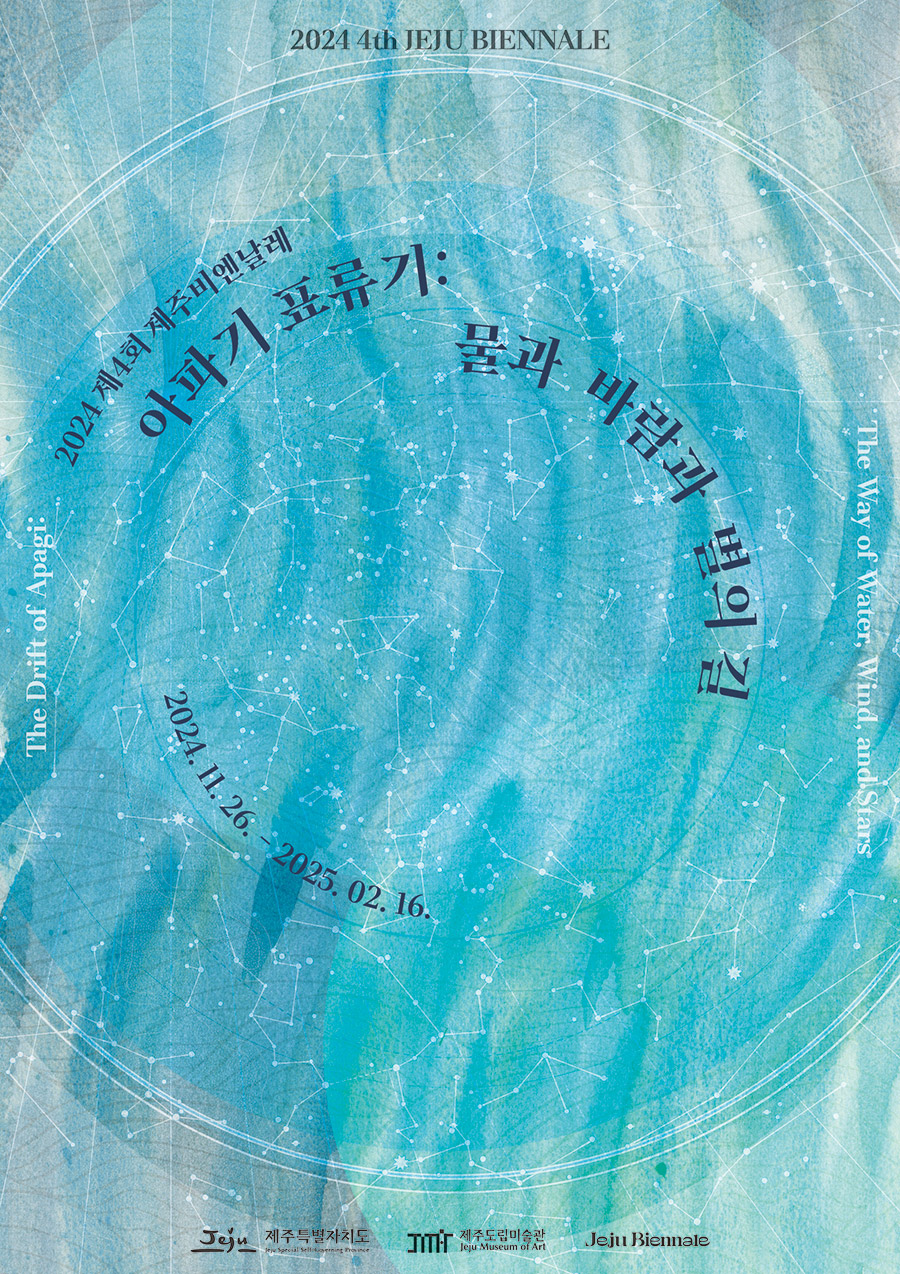EXHIBITION
2024 4th JEJU BIENNALE
-
Exhibition Overview
“The Drift of Apagi :
The way of water, wind, and stars”Jeju Island is a place imbued with a history of drift. This exhibition explores how various elements that have shaped Jeju nature, religion, culture, and politics intertwine within the international context, balancing on the edge of chance and necessity to form its unique identity and commonalities.
We examine the impact of natural phenomena like the Kuroshio Current and Jeju's constellations on human life and how the concept of 'drift' interacts with our perception. Historical records tell us that a Japanese envoy, during an exchange with the Tang Dynasty, accidentally drifted to Jeju (then known as Tamna Kingdom), leading to Prince Apagi阿波伎 of Tamna visiting Japan.
Just as these numerous drifts along ocean currents have shaped our civilization, the Jeju Biennale aims to create another vast ocean where encounters, collisions, and fusions take place.
The Jeju Biennale, through diverse artworks and programs, addresses these themes, offering visitors a new perspective on Jeju's history and culture. This exhibition reinterprets Jeju's multifaceted stories formed at the intersection of chance and necessity from an artistic standpoint, providing new insights and inspiration. -

Section
The 4th Jeju Biennale [The Drift of Apagi: The Way of Water, Wind, and Stars] is based on a fictional scenario where Apagi,
a prince of the Tamna Kingdom, sets sail and experiences a drifting journey.
Apagi's voyage begins at Unhanmoe, encounters a storm, and reaches Sabadang, an island where birds rest.
He then continues to sail, guided by water, wind, and stars, and matures through this process, ultimately arriving at an ideal destination.
Apagi's voyage aims to convey that our lives themselves are a voyage and a drift.
Unhanmoe
Inspired by "Hallasan,"
meaning a mountain so high
that it can pull the Milky Way,
this newly coined term marks
the beginning of Apagi's voyage.
Newdi
Derived from a term meaning "a place to row,"
Newdi represents the first chapter
where Apagi rows out into the vast sea.
Sabadang
A term from old Korean meaning "bird" (sa) and "sea" (badang),
referring to an isolated island.
In the second chapter,
Apagi encounters a storm during his voyage,
leading him to drift ashore on a remote island,
where he meets birds and nomadic people.
Canpart
A compound word derived from “Canopus,"
an ancient term for the star, and “Quelpart,"
a past Western name for Jeju Island.
The star served as a guide for sailors
and was believed to govern human lifespan.
This chapter depicts Apagi's inner maturation
as he continues his voyage.
Nuuiwak
A combination of "neoul" (wave) and "iwak" (story),
signifying an idealistic tale brought across the waves.
This fourth chapter represents the utopian paradise
that Apagi encounters during his drift.
Jageunte
A Jeju dialect word for storyteller,
symbolizing the epilogue.
It refers to the story of Apagi,
who had never drifted before,
showing that the voyage and drifting of Apagi
are a metaphor for our own lives.
ⓒ 2024 Jeju Biennale - All website contents are copyright protected

























